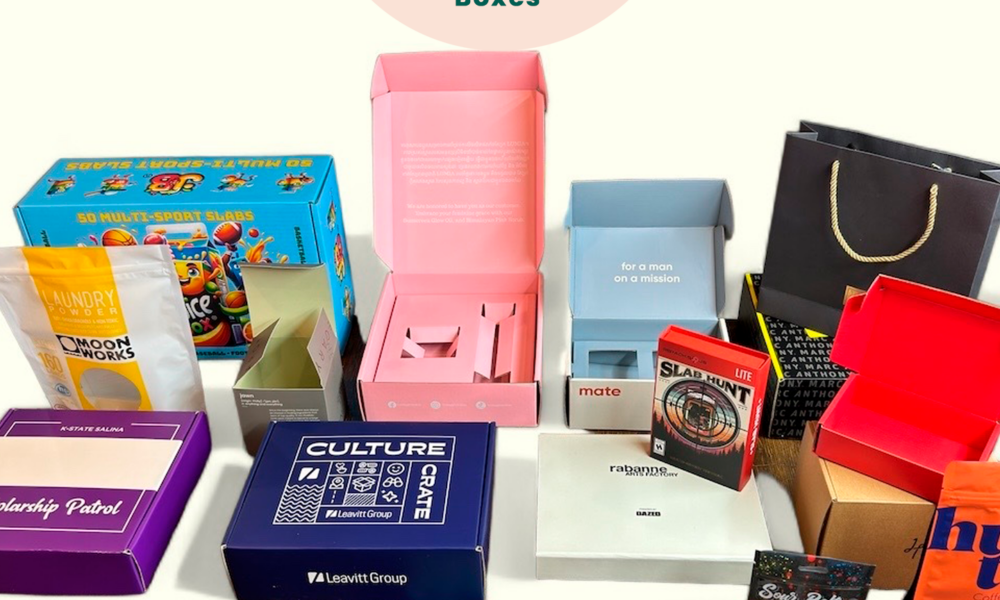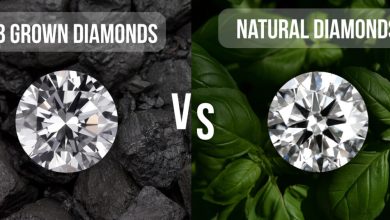How to Design Custom Boxes from Scratch: Understand The Route from Concept to Delivery

When it comes to packaging, you’ve got to think of it as an extension of your product. Your product’s packaging, be it the container of the product itself or boxes that set and/or deliver your product, is quite literally the first thing that the consumers set eyes on.
It is in fact backed by research that the packaging of the product is one of the most significant factors influencing purchase and repeat orders.
So basically, your packaging just can’t be anything.
Your product packaging and shipping boxes are not random decisions that can simply be outsourced. Rather they are critical branding and marketing elements that have a strategic impact on the success of your brand.
This also means that your packaging needs to be an excellent representation of your key brand values, brand image, and the benefits of the packed product.
This process of turning a simple box into your brand ambassador is known as custom packaging.
Custom packaging is much more than simply printing your brand logo or the product description on the box. It is a carefully thought-about strategic marketing tool that is developed with the intent of creating a solid brand identity and elevating customer experience.
An effectively designed customized box will not only protect its contents but also encourage customer engagement and loyalty.
This process of developing customized packaging is easier said than done.
There is a multitude of options when it comes to choosing the right style, size, material, printing technique, and add-ons for the customized box.
Maneuvering through these to create the perfect packaging can be quite overwhelming so we’ve taken the opportunity to effectively summarize it below for you.
Let’s get started!
Detailed Guide to Designing Customized Boxes
Designing a custom box is not an easy process.
Custom packaging is about finding the right balance which is a much more difficult aspect than just selecting colors, logos, and finishing.
It’s designed to align with your brand’s vibe while making sure the products remain secure from the warehouse to the customer’s doorsteps.
Cost-effective and durable, these tailored solutions meet operational needs and are always delivered on time.
Select the Right Custom Packaging Manufacturer
The first step in creating your dream custom packaging is to select the right packaging partner.
Selecting a creative and reliable custom packaging manufacturer like The Mailer Box, is essentially completing half of the task because a packaging manufacturer worth their mettle would evaluate your product and business needs and effectively guide you towards the most impactful yet budget-friendly custom packaging alternatives.
An intelligent custom packaging manufacturer will work with the brand to understand product, business and supply chain requirements and based on their experience, recommend a box that will serve the brand in the best possible way.
Below are some considerations to look for before choosing a packaging manufacturer:
- Select a manufacturer with experience in your industry.
- Check their production capacity and capabilities.
- Make sure they work with high-quality materials through samples and prototypes
- Thoroughly check their design and customization options and process.
- Consider their pricing and how it aligns with your budget.
- Assess their customer service and support.
- Check authentic reviews and testimonials from other clients.
Define Product and Transit Requirements
Once you select the right manufacturer, the next step is to define and communicate every product and business requirement to the packaging manufacturer.
| Product Requirements | |
| 1 | Product dimensions |
| 2 | Product Weight |
| 3 | Product Fragility |
| 4 | Temperature Sensitivity |
| 5 | Moisture Resistance |
| 6 | Extra Padding Requirements |
| 7 | Number of items in a box |
| Business Requirements | |
| 1 | Packaging Costs |
| 2 | Ease of Assembly |
| 3 | Storage Efficiency |
| 4 | Material Safety |
| 5 | Eco-friendliness |
| 6 | Lead Times |
| 7 | Brand Appeal |
Determining these specifications allows the manufacturer to design packaging that keeps your product safe, reduces damage during transportation, and ensures customer satisfaction delivery.
Discuss Shape, Structure, and Material
Once the requirements have been defined, the next step is to discuss the actual customized box.
The growth of packaging technology has made the available variety of custom packaging almost limitless.
However, for simplicity purposes, these can be divided into some main custom box categories such as corrugated boxes, rigid boxes (collapsible, non-collapsible), folding cartons, plastic boxes, and flexible pouches.
Design and Branding Requirements
After the core structure and size of the customized box have been settled, the next step is to focus on the print design elements.
Go through the design and branding requirements that align with your brand identity perfectly. The customized design should be visually attractive while communicating your brand’s message and core values.
Also, consider how the unboxing experience will affect the customer’s perception of your brand. For this, collaborate with the manufacturer’s design team to create a distinctive and well-balanced design that perfectly incorporates the information layout, product details, usage guidelines, and legal requirements.
Printing Add-Ons
Discuss any add-ons or custom printing needs you might have. Printing add-ons can increase your packaging’s use and aesthetic appeal.
Different add-on options are:
- Coatings: Certain protective layers are applied to custom boxes to improve their durability and appearance. Examples include gloss, matte, and UV coatings.
- Embossing: Gives the box’s surface raised patterns that give it a luxurious, tactile feel.
- Debossing: Contrary to embossing, debossing produces sunken designs that add a delicate yet sophisticated touch.
- Foil Stamping: Gives the box metallic elements that give it a lustrous, shining appearance. It’s frequently applied to logos and unique highlights.
- Window Patching: Adds a transparent window to the box, allowing customers to see the product inside without opening the packaging.
- Die-Cut Shapes: Custom shapes and cutouts are made in the box to create unique designs and functional features like handles or display windows.
- Spot UV: A shiny coating that is given to particular parts of the box to draw attention to and highlight particular components.
- Inserts: Custom-fit pieces inside the box that hold products securely in place and can be made from materials like foam, cardboard, or plastic.
- Tear Strips: Integrated strips that improve consumer convenience and product accessibility by making package opening simple.
- Book Style: Boxes designed to open like a book, offering a unique and engaging unboxing experience often used for premium products.
You may also discuss functional add-ons, such as QR codes, directing clients to your website or any promotional content.
These printing techniques help make your packaging look unique and better while also acting as a marketing tool to draw in customers and promote repeat business.
Request 3D Render or Mock-Up
Ask for a 3D render or mock-up of the final die lines to visualize the design. This phase of the process is crucial for making sure that the design you’ve selected translates well from your digital concept to the physical product.
A 3D render enables you to inspect the box from all angles, checking for design defects or changes needed before production.
Mock-ups provide a physical prototype that can be assessed for two things: design and functionality. The whole process helps in pointing out any potential issues before bulk production, saving time and resources.
Ask for Samples
It’s advisable to request samples to evaluate the quality of the custom boxes. With samples, you may assess the material, printing quality, and overall box structure firsthand.
It’s a crucial step to make sure the finished product lives up to your standards and expectations. Examine the box’s durability, the printed design’s precision and clarity, and the box’s ability to withstand pressure.
Having samples also lets you test the packaging on your goods to make sure they fit perfectly and provide enough protection.
Set Timelines
Decide the production and delivery schedule with your packing manufacturer. Establishing precise deadlines helps guarantee that your custom boxes will be available when you need them.
This involves being aware of the lead times for production, shipment, and design approval. Verify with the manufacturer if they can fulfill your deadlines, particularly if you have a planned product launch or marketing campaign.
Allow a little buffer time in case there are any unexpected delays or modifications. Setting clear timelines helps manage your supply chain efficiently and avoids operational disruptions.
Provide Feedback
Once you receive your custom boxes, always share feedback with the vendor. Giving detailed feedback helps the box manufacturer understand your expectations better leading to improvements in future orders.
Highlight issues besides encouraging the manufacturer about the elements you were particularly satisfied with.
This cooperative strategy encourages strong business relationships and makes sure that both parties grow together.
Regular feedback ensures continuous improvements, upholds a higher standard of your products, and aids in improving custom packaging’s quality.
Related Article: The Instagram-Worthy Packaging: How to Design Boxes that Go Viral
The Bottom Line
Designing custom packaging from scratch is a comprehensive process that extends beyond simply placing your product in a generic box. In today’s competitive industry, where customer expectations are high, investing in custom packaging can immensely improve your brand’s visibility and customer satisfaction.
From selecting the right custom packaging manufacturer to defining product and transit needs, talking through the box’s shape, structure, and material, and making sure the design aligns with your brand identity, each step is crucial.
Moreover, customized printing add-ons, 3D renders, and mock-ups guarantee practicality and visual appeal. Clear deadlines help keep the process on track, and sampling aids in quality maintenance. Providing feedback encourages a collaborative relationship with the manufacturer, leading to steady improvement and mutual growth.
For businesses aiming for a significantly visible impact with their packaging solution, partner with an established manufacturer, The Mailer Box, as it can make all the difference. Whether you go for high-end custom rigid boxes or versatile corrugated mailer boxes, we’ll ensure that your packaging choices align with your business goals and customer preferences. Explore the options with us and boost your brand’s packaging today.





